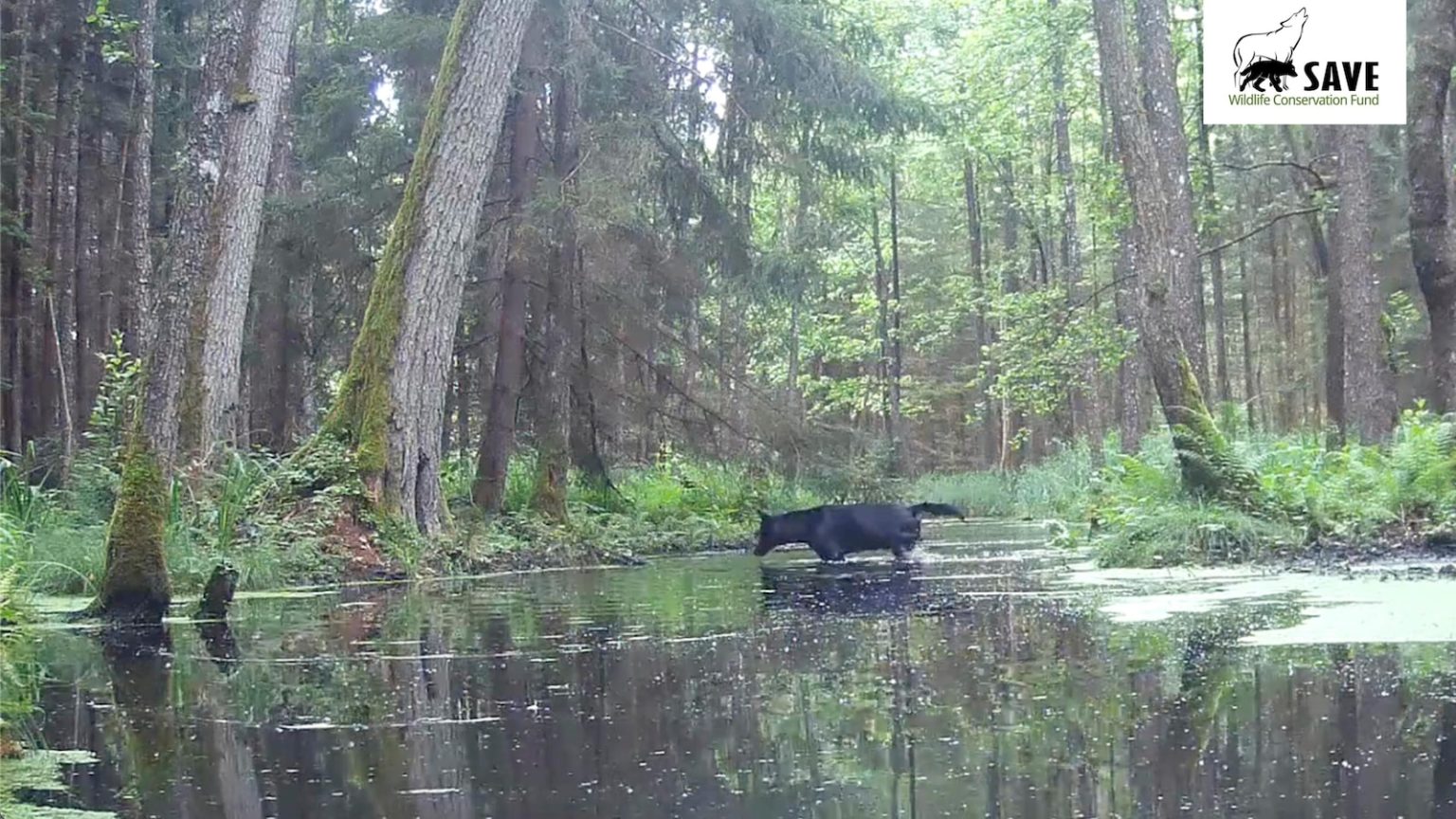Rare Black Wolves Spotted in Polish Forest: A Conservation Breakthrough
A Rare and Captivating Sighting
In a remarkable discovery, two rare black wolves, believed to be siblings, were recently captured on camera crossing a stream in a Polish forest. The footage, recorded by a video camera set up by Joanna Toczydłowska, a project coordinator for the SAVE Wildlife Conservation Fund Poland, has sparked excitement among conservationists and wildlife enthusiasts. Toczydłowska initially placed the camera to study beavers, but her unexpected discovery of wolves has opened new avenues for research. The unusual sighting has not only highlighted the presence of these elusive creatures but also underscored the importance of genetic diversity in wolf populations.
The video footage, taken over the past year, shows a black wolf and a gray wolf wading through a forest stream, the water reaching almost up to their bellies before they leap onto the bank. Another clip, recorded last fall, captures two black wolves and a gray wolf fording the same stream. These rare sightings have prompted Toczydłowska and her team to collect wolf scat (droppings) from the forest to analyze the genetics of the black wolves. "It’s something new and unusual," Toczydłowska remarked, emphasizing the significance of this discovery.
The Genetics Behind the Rare Black Fur
The black fur of these wolves is a result of a rare genetic mutation, a trait that is uncommon in European wolf populations. Most wolves in Poland, estimated to be between 2,500 and 3,000, are typically gray with red or black accents. The genetic mutation responsible for the black fur is believed to have originated in domesticated dogs thousands of years ago. This mutation is rare in Europe due to reduced genetic diversity among wolves, but it is more prevalent in other regions, such as Yellowstone National Park in the United States, where at least half of the wolf population has black fur.
The rarity of black wolves in Europe makes this sighting particularly significant. By studying the scat collected from the forest, conservationists hope to gain insights into the genetic diversity of Poland’s wolf population and the factors contributing to the presence of this rare mutation. Understanding the genetics of these wolves could also provide valuable information about their origins and how they interact with other wolf populations in the region.
A Glimpse into Wolf Family Dynamics
The two black wolves spotted in the footage are estimated to be around 30 kilograms (66 lbs) each, roughly the size of a German shepherd, and are believed to be about a year old. Based on their size and behavior, Toczydłowska suspects that they are siblings. At least one of the wolves is male. Wolves are known to travel in family groups, and the presence of these young black wolves suggests that they may be part of a larger pack. This observation highlights the importance of family dynamics in wolf behavior and the role that genetic factors play in shaping their physical characteristics.
The conservation organization has chosen not to disclose the exact location of the forest where the wolves were spotted, citing concerns about poaching and the spread of misinformation. Protecting these animals from human threats is a critical component of their conservation efforts. By keeping the location private, the organization aims to safeguard the wolves and ensure that their habitat remains undisturbed.
The Reintroduction of Wolves in Poland
Wolves were nearly extinct in Poland by the mid-20th century, but conservation efforts have led to their reintroduction, particularly in the central part of the country in the early 2000s. The SAVE Wildlife Conservation Fund Poland has been monitoring wolf populations for over 13 years, working tirelessly to protect these animals and educate the public about their role in the ecosystem.
The reintroduction of wolves has been a success story in Poland, but it has also brought new challenges. As wolf populations grow, so does the need for coexistence between humans and wolves. Educating the public about how to safely live alongside wolf packs has become a major priority for conservationists. Roman Gula, head of the organization’s wolf monitoring project, emphasized the importance of education, stating, "For people, it is a new phenomenon." By fostering understanding and appreciation for these animals, conservationists hope to create a harmonious relationship between humans and wolves.
A Call to Action for Conservation Support
The SAVE Wildlife Conservation Fund Poland recently shared the news of the black wolf sighting on Facebook, generating widespread interest and curiosity. The organization has also issued a call for financial support to help fund the genetic testing of the wolf scat collected from the forest. This testing will provide valuable insights into the genetic makeup of the black wolves and contribute to broader conservation efforts.
By supporting this initiative, individuals can play a direct role in advancing the understanding and protection of Poland’s wolf population. The discovery of these rare black wolves serves as a reminder of the fascinating diversity within wildlife and the importance of preserving it for future generations. As conservationists continue their work, the sighting of these wolves offers a glimmer of hope for the long-term survival of this majestic species.















